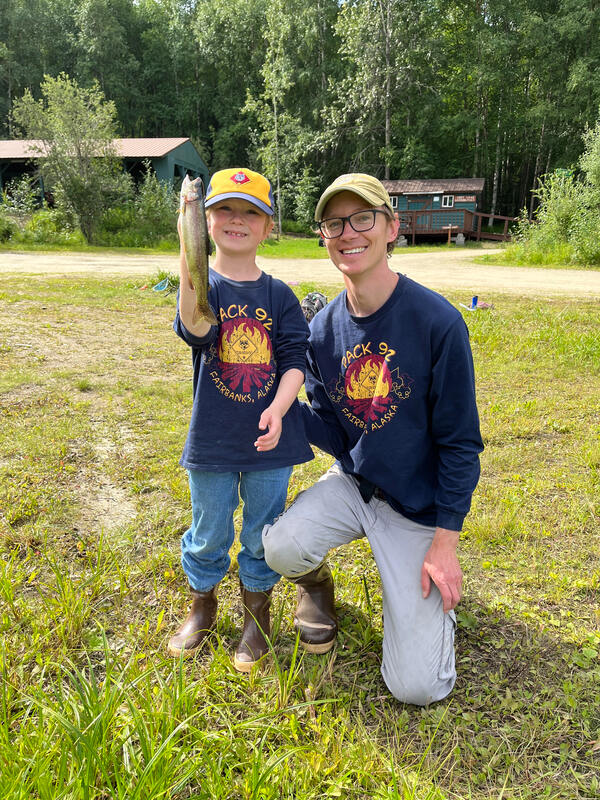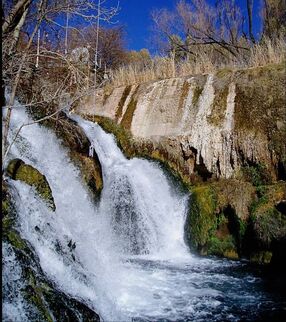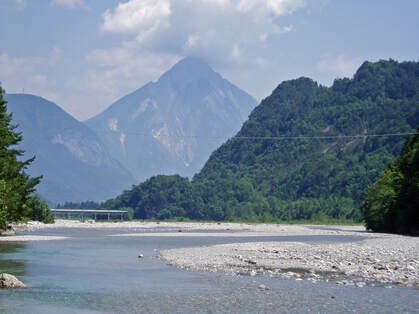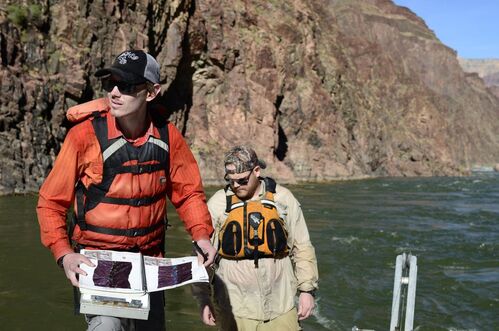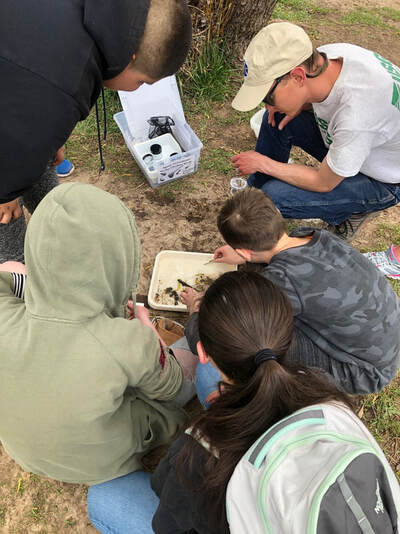Hi, I'm Jeff
Or, formally, Dr. Jeffrey D. Muehlbauer, PhD. That's a mouthful. Just Jeff is fine.
Most people in my line of work post pictures of themselves holding large salmonids. I don't fish a whole lot presently, on account of parenting small children.
So, instead, here's a picture of me next to someone else holding a fish. (Me with my son at Cub Scout camp. Way cuter than some fly fishing shot, no?)
Shockingly, there are other Jeff Muehlbauer's in the world, even in Alaska. If you're looking for the one who speaks Cree, or the one who drives race cars, or the one who builds bridges in Nenana, sadly, you've come to the wrong place. This Jeff (me) studies rivers. and ecology. and bugs.
Most people in my line of work post pictures of themselves holding large salmonids. I don't fish a whole lot presently, on account of parenting small children.
So, instead, here's a picture of me next to someone else holding a fish. (Me with my son at Cub Scout camp. Way cuter than some fly fishing shot, no?)
Shockingly, there are other Jeff Muehlbauer's in the world, even in Alaska. If you're looking for the one who speaks Cree, or the one who drives race cars, or the one who builds bridges in Nenana, sadly, you've come to the wrong place. This Jeff (me) studies rivers. and ecology. and bugs.
About me
My CV is on GitHub if you prefer terse bullets, degree dates, and such. Most of my work also has associated publications if you want to read a scientific paper or two.
Below is the more narrative form of all this:
Below is the more narrative form of all this:
I was raised in Flagstaff, Arizona and had the great privilege to get involved with stream ecology research in the summer between graduating from high school and beginning my undergraduate career at Northern Arizona University. This research as part of Jane Marks' lab focused on stream ecological responses to dam decommissioning in Fossil Creek, a place I grew up visiting with Boy Scouts. It's a gem in the desert and got me hooked working in streams and rivers.
After graduating from NAU, I attended graduate school at the University of North Carolina, where I worked with Martin Doyle (now at Duke), a fluvial geomorphologist. My masters research focused on ecological communities around knickpoints, which are disturbance features in urban streams, and on community responses to artificial drying on a coastal wetland mitigation stream. I stayed at UNC for my PhD, where I studied what I called the "stream signature;" essentially, how far away from a stream or river an aquatic signal could be detected in terrestrial food webs. For this I was incredibly fortunate to be connected with Klement Tockner and the Leibniz Institute of Freshwater Ecology and Inland Fisheries in Berlin, and to work in field sites such as the Tagliamento River in Italy and the Danube River throughout central Europe.
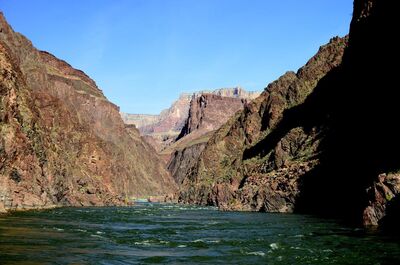 The Colorado River in Grand Canyon. Photo Credit: Joel Sholtes.
The Colorado River in Grand Canyon. Photo Credit: Joel Sholtes.
Much to my surprise, this research made me somewhat of a large river food web specialist and paved a way for me to become a post-doc at the U.S. Geological Survey (USGS) Grand Canyon Monitoring and Research Center back in my hometown of Flagstaff. Working with Ted Kennedy in particular, I studied the aquatic food web of the Colorado River in Grand Canyon, including implementing the testing of experimental "Bug Flow" releases from Glen Canyon Dam for the benefit of improving conditions for aquatic insects. To my knowledge, this is the largest-scale experiment ever conducted for the benefit of aquatic bugs.
I am now an Assistant Unit Leader- Fisheries at the USGS Alaska Cooperative Fish and Wildlife Research Unit (AKCFWRU) in Fairbanks, Alaska. As part of this job I also am an Assistant Professor with the University of Alaska Fairbanks in the Institute of Arctic Biology, Department of Fisheries, and Department of Biology and Wildlife.
I am now an Assistant Unit Leader- Fisheries at the USGS Alaska Cooperative Fish and Wildlife Research Unit (AKCFWRU) in Fairbanks, Alaska. As part of this job I also am an Assistant Professor with the University of Alaska Fairbanks in the Institute of Arctic Biology, Department of Fisheries, and Department of Biology and Wildlife.
What I Do
Broadly, I am a community ecologist in that my research interests tend to emphasize the "who, what, when, where, how" of groups of species in terms of their abundance and diversity. Because I work in freshwaters, my research often overlaps strongly with fluvial geomorphology and hydrology and how these environmental variables (habitat) affect ecological communities.
|
I tend to work in large rivers, by which I mean freshwaters you can't jump across (super technical, I know). But because large rivers almost invariably come from small streams, I still often find myself in those too.
Most of my work is applied, meaning I work in managed ecosystems or otherwise conduct research that has some management implication. This includes dams and habitat restoration/mitigation in particular. I am at heart a fieldwork grunt who enjoys muddy boots and empirical data. But I also see the value in data synthesis, meta-analysis, and statistical modeling. My career has had both, and I think my research is at its best when the two are blended. Because I gravitate toward community (groups of species) rather than population (single species) questions, I often find myself working with aquatic insects because they're more diverse. Still, most of my work is "fish adjacent" because bugs live with, compete with, and (most importantly) are eaten by fish, and often my sampling involves fish diets, stable isotope analysis, and so on. |
|
Banner Photo Credit: Monica Gosselin-Boeman.
